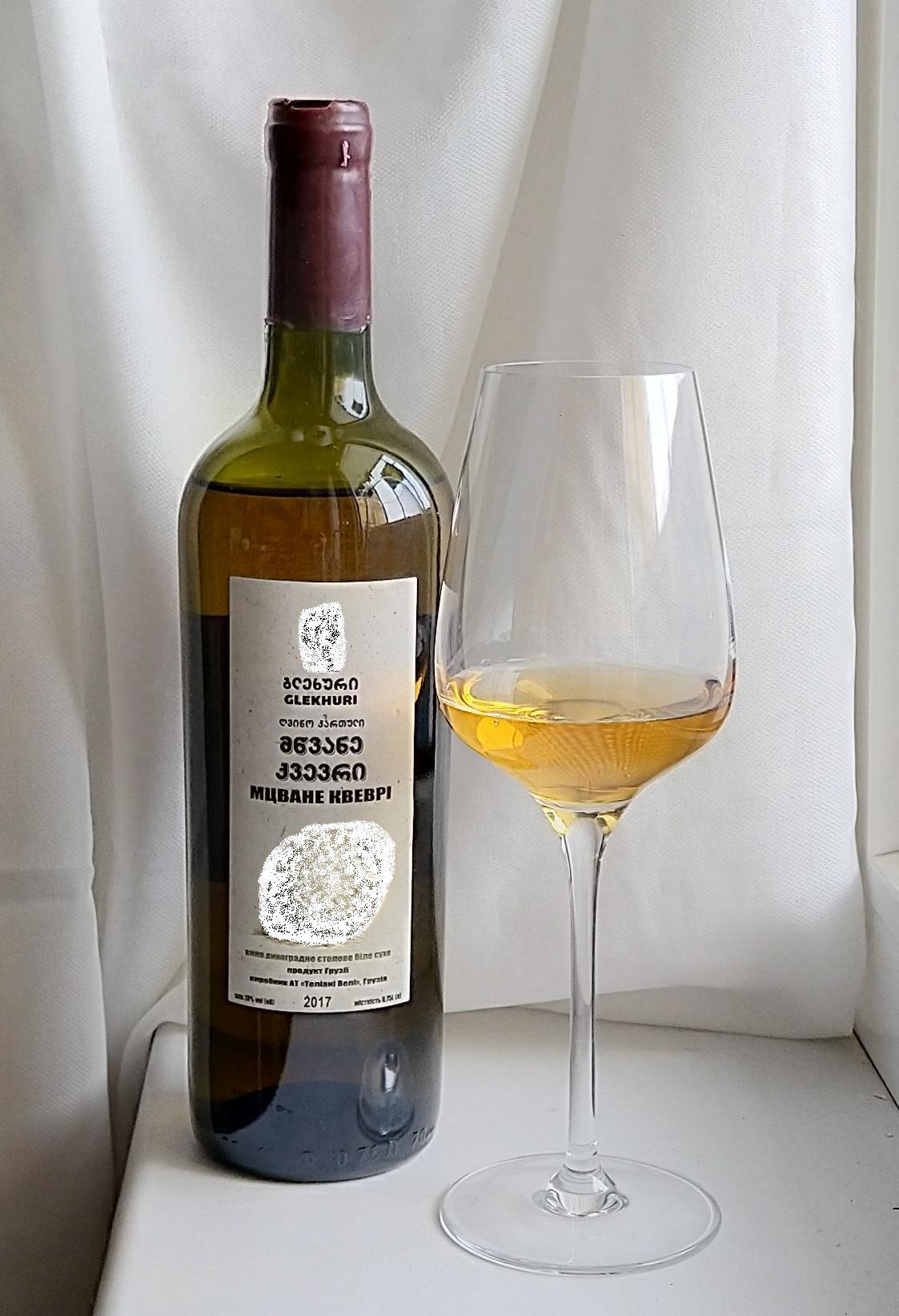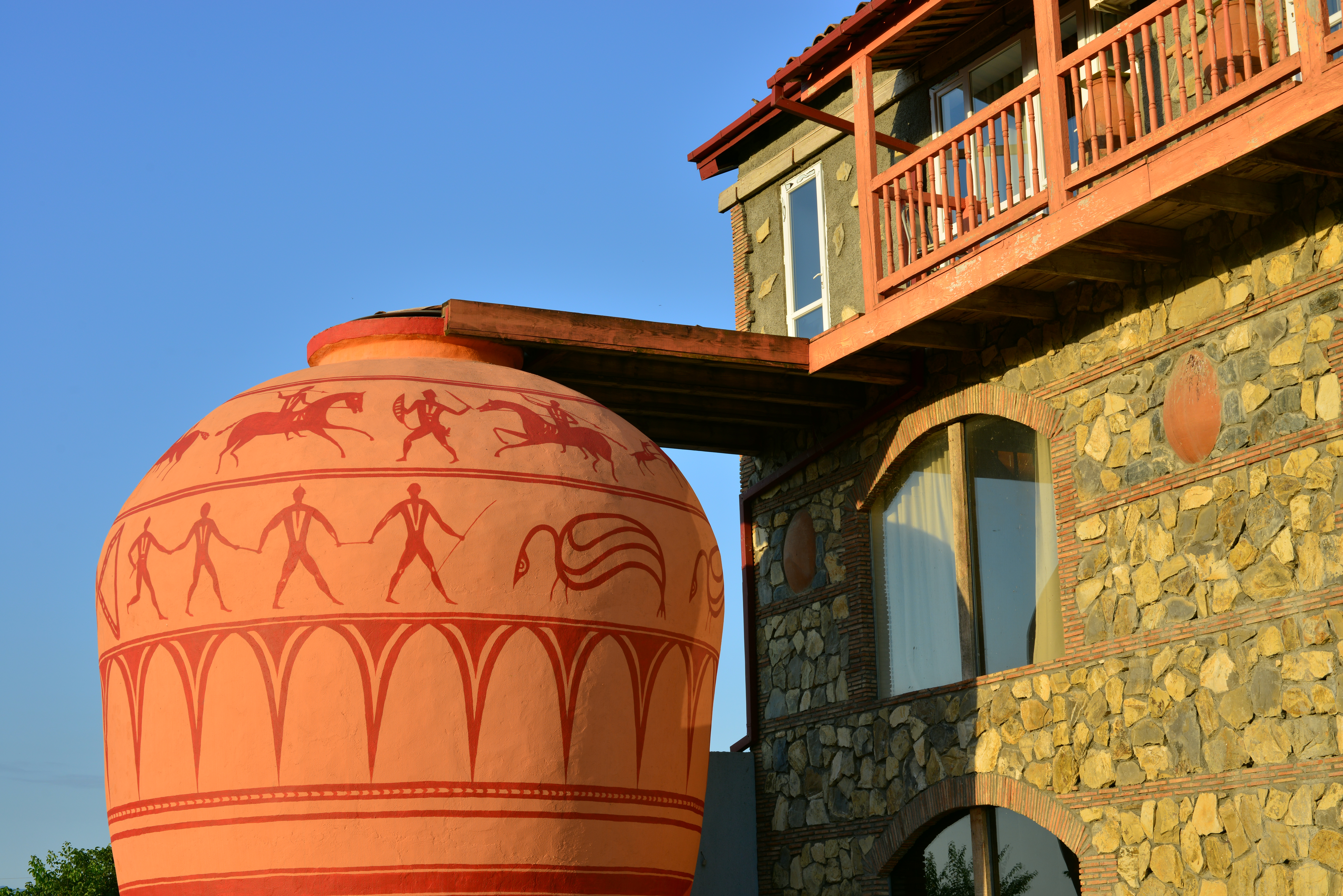|
Tsinandali Wine
Tsinandali ( ''t’vishits’inandali'') white wine comes from Georgia. It is made from Rkatsiteli and Mtsvane grapes and comes from the Telavi and Kvareli area of Kakheti. Tsinandali is fermented at cool temperatures and matured for two to three years to bring out the complexity. Tsinandali can be aged for a further five, adopting some nutty bottle-aged characters in the process. It has a pale golden color and a light body. The flavor is light, with a moderate finish. History Wine production in Georgia is very long-standing with a history going back at least 8000 years. Its production is also associated with the arrival of Christianity, brought by St. Nino in the fourth century AD. Georgia produces over 50 wine types and is the home of over 500 grape varieties. Production was small scale at first but became increasingly large-scale and standardized until the Soviet era, which placed emphasis on quantity rather than quality and differentiated the industry into three parts, grow ... [...More Info...] [...Related Items...] OR: [Wikipedia] [Google] [Baidu] |
Georgia (country)
Georgia (, ; ) is a transcontinental country at the intersection of Eastern Europe and Western Asia. It is part of the Caucasus region, bounded by the Black Sea to the west, by Russia to the north and northeast, by Turkey to the southwest, by Armenia to the south, and by Azerbaijan to the southeast. The country covers an area of , and has a population of 3.7 million people. Tbilisi is its capital as well as its largest city, home to roughly a third of the Georgian population. During the classical era, several independent kingdoms became established in what is now Georgia, such as Colchis and Iberia. In the early 4th century, ethnic Georgians officially adopted Christianity, which contributed to the spiritual and political unification of the early Georgian states. In the Middle Ages, the unified Kingdom of Georgia emerged and reached its Golden Age during the reign of King David IV and Queen Tamar in the 12th and early 13th centuries. Thereafter, the kingdom decl ... [...More Info...] [...Related Items...] OR: [Wikipedia] [Google] [Baidu] |
Rkatsiteli
Rkatsiteli (; Georgian რქაწითელი ''rkats’iteli''; literally "red stem" or "red horned") is a kind of grape used to produce white wine. History This ancient vinifera originates in Georgia and is supposed to be one of the oldest grape varieties.J. Robinson ''Vines, Grapes & Wines'' pg 260 Mitchell Beazley 1986 Rkatsiteli was the most widely planted grape variety in the Soviet Union and, by 1978, was responsible for 18% of all Soviet wine production. There it was used to make everything from table wine to liqueurs to Sherry-like fortified wine. Prior to President Gorbachev's vine pull scheme, it was possibly the world's most widely planted white wine grape.winepros.com.au. In Kakheti it was particularly known for its sweet dessert wines fashioned in the same manner as port wine. There were many attempts to create a sparkling wine from the grape but its naturally high alcohol levels prevented it from being much of a success. Wine regions The grape is m ... [...More Info...] [...Related Items...] OR: [Wikipedia] [Google] [Baidu] |
Mtsvane
Mtsvane or Mtsvane Kakhuri is a grape variety used to make Georgian wines. It is used to make white wine. It was so named to refer to the yellowish-green colouring of the ripened berries. It is often blended with Rkatsiteli to create a fruity, aromatic wine. In the Georgian language the word ''mtsvane'' means new, young and green. Synonyms Mtsvane is also known under the synonyms Dedali Mtsvane, Dedali Mtzvane, Dedam Kourdzeni, Dedat Kourdzeni, Dedat Kurdzeni, Dedate Koudzeni, Mamali Mtsvane, Mamali Mtsvani, Mamali Mtzvane, Matsvane Kakhetinskii, Matsvani, Mchkhara, Mchknara, Mciknara, Mcvane Kachetinskij, Mcvane Kahetinski, Mtchknara, Mtsvane Kakhetinskii, Mtzvane Kachuri, Mtzvane Kakhetinsky, Mzibani, and Sapena. The distinct Georgian grape varieties Kundza and Goruli Mtsvane may also be referred to as Mtsvane. See also *Georgian wine *List of Georgian wine appellations The following is a list of Georgian wine appellations. 20 appellations are registered with Sakpatent ... [...More Info...] [...Related Items...] OR: [Wikipedia] [Google] [Baidu] |
Telavi
Telavi ( ka, თელავი ) is the main city and administrative center of Georgia's eastern province of Kakheti. Its population consists of some 19,629 inhabitants (as of the year 2014). The city is located on the foothills of the Tsiv-Gombori Range at above sea level. History The first archaeological findings from Telavi date back to the Bronze Age. One of the earliest surviving accounts of Telavi is from the 2nd century AD, by Greek geographer Claudius Ptolemaeus, who mentions the name ''Teleda'' (a reference to ''Telavi''). Telavi began to transform into a fairly important and large political and administrative center in the 8th century. Interesting information on Telavi is provided in the records by an Arab geographer, Al-Muqaddasi of the 10th century, who mentions Telavi along with such important cities of that time's Caucasus as Tbilisi, Shamkhor, Ganja, Shemakha and Shirvan. Speaking about the population of Telavi, Al-Muqaddasi points out that for the most part it c ... [...More Info...] [...Related Items...] OR: [Wikipedia] [Google] [Baidu] |
Kvareli
Kvareli (, ) is a town in northeastern in Kakheti Province, Georgia. Located in the Alazani Valley, near the foothills of the Greater Caucasus Mountains, it was the birthplace of Georgian author Ilia Chavchavadze, whose one-storied house is preserved as a local museum. The area is in the center of the Kakheti wine-producing region, and the town itself is known for its Kindzmarauli wine, a semisweet red variety. Notable people Notable people who are from or have resided in Kvareli: * Ilia Chavchavadze, writer, poet. * Kote Marjanishvili, Georgian theater director * Ilia Beroshvili, I.Chavchavadze Museum Director See also * Kakheti * Gremi * Tsinandali Tsinandali ( ka, წინანდალი) is a village in Kakheti, Georgia, situated in the district of Telavi, 79 km east of Tbilisi. It is noted for the palace and historic winery-estate which once belonged to the 19th-century aristocr ... References Cities and towns in Kakheti Tiflis Governorate ... [...More Info...] [...Related Items...] OR: [Wikipedia] [Google] [Baidu] |
Kakheti
Kakheti ( ka, კახეთი ''K’akheti''; ) is a region (mkhare) formed in the 1990s in eastern Georgia from the historical province of Kakheti and the small, mountainous province of Tusheti. Telavi is its capital. The region comprises eight administrative districts: Telavi, Gurjaani, Qvareli, Sagarejo, Dedoplistsqaro, Signagi, Lagodekhi and Akhmeta. Kakheti is bordered by the Russian Federation with the adjacent subdivisions ( Chechnya to the north, and Dagestan to the northeast), the country of Azerbaijan to the southeast, and with the regions of Mtskheta-Mtianeti and Kvemo Kartli to the west. Kakheti has a strong linguistic and cultural identity, since its ethnographic subgroup of Kakhetians speak the Kakhetian dialect of Georgian. The Georgian David Gareja monastery complex is partially located in this province and is subject to a border dispute between Georgian and Azerbaijani authorities. Popular tourist attractions in Kakheti include Tusheti, Gremi, Signagi, Kveter ... [...More Info...] [...Related Items...] OR: [Wikipedia] [Google] [Baidu] |
Bottle-aged
The aging of wine is potentially able to improve the quality of wine. This distinguishes wine from most other consumable goods. While wine is perishable and capable of deteriorating, complex chemical reactions involving a wine's sugars, acids and phenolic compounds (such as tannins) can alter the aroma, color, mouthfeel and taste of the wine in a way that may be more pleasing to the taster. The ability of a wine to age is influenced by many factors including grape variety, vintage, viticultural practices, wine region and winemaking style. The condition that the wine is kept in after bottling can also influence how well a wine ages and may require significant time and financial investment.R. Jackson ''"Wine Science: Principles and Applications"'' Third Edition, pp. 431–489, 643–671. Academic Press 2008 .R. Boulton, V. Singleton, L. Bisson, R. Kunkee ''Principles and Practices of Winemaking'', pp. 382–424. Springer 1996 New York . The quality of an aged wine varies significa ... [...More Info...] [...Related Items...] OR: [Wikipedia] [Google] [Baidu] |
Vinologue
Vinologue is a publisher of an enotourism guidebook series of the same name. It was founded by Miquel Hudin in 2007 with Èlia Varela i Serra as editor and the guides are designed to allow those interested in enotourism to visit "Big Wines from Small Regions" as they focus exclusively on the wines as well as the gastronomy and local culture of small regions throughout the world. The first Vinologue Guide was for Dalmatia in Croatia and was released in 2008. History After several trips throughout Europe in the early 2000s the founders discovered that traditional travel guidebooks made little to no mention of the wines or the culture and gastronomy that surrounds it. In 2007 they started researching a guide for the coastal Dalmatia region in Croatia. While researching the guide, they found the wines of neighboring Herzegovina to be of high quality as well and decided to release two guides instead of the original one. All of the guides were initially released in the digital EPUB ... [...More Info...] [...Related Items...] OR: [Wikipedia] [Google] [Baidu] |
Christianity
Christianity is an Abrahamic monotheistic religion based on the life and teachings of Jesus of Nazareth. It is the world's largest and most widespread religion with roughly 2.38 billion followers representing one-third of the global population. Its adherents, known as Christians, are estimated to make up a majority of the population in 157 countries and territories, and believe that Jesus is the Son of God, whose coming as the messiah was prophesied in the Hebrew Bible (called the Old Testament in Christianity) and chronicled in the New Testament. Christianity began as a Second Temple Judaic sect in the 1st century Hellenistic Judaism in the Roman province of Judea. Jesus' apostles and their followers spread around the Levant, Europe, Anatolia, Mesopotamia, the South Caucasus, Ancient Carthage, Egypt, and Ethiopia, despite significant initial persecution. It soon attracted gentile God-fearers, which led to a departure from Jewish customs, and, a ... [...More Info...] [...Related Items...] OR: [Wikipedia] [Google] [Baidu] |
Soviet Union
The Soviet Union,. officially the Union of Soviet Socialist Republics. (USSR),. was a transcontinental country that spanned much of Eurasia from 1922 to 1991. A flagship communist state, it was nominally a federal union of fifteen national republics; in practice, both its government and its economy were highly centralized until its final years. It was a one-party state governed by the Communist Party of the Soviet Union, with the city of Moscow serving as its capital as well as that of its largest and most populous republic: the Russian SFSR. Other major cities included Leningrad (Russian SFSR), Kiev (Ukrainian SSR), Minsk ( Byelorussian SSR), Tashkent (Uzbek SSR), Alma-Ata (Kazakh SSR), and Novosibirsk (Russian SFSR). It was the largest country in the world, covering over and spanning eleven time zones. The country's roots lay in the October Revolution of 1917, when the Bolsheviks, under the leadership of Vladimir Lenin, overthrew the Russian Provisional Government ... [...More Info...] [...Related Items...] OR: [Wikipedia] [Google] [Baidu] |
Georgian Wine
Georgia is the oldest wine producing region in the world. The fertile valleys and protective slopes of the South Caucasus were home to grapevine cultivation and neolithic wine production ( ka, ღვინო, ''ɣvino'') for at least 8000 years. Due to millennia of winemaking and the prominent economic role it retains in Georgia to the present day, wine and viticulture are entwined with Georgia's national identity. Among the best-known Georgian wine regions are Kakheti (further divided into the micro-regions of Telavi and Kvareli), Kartli, Imereti, Racha-Lechkhumi and Kvemo Svaneti, Adjara and Abkhazia. In 2013, UNESCO added the ancient traditional Georgian winemaking method using the Kvevri clay jars to the UNESCO Intangible Cultural Heritage Lists. History The roots of Georgian viticulture have been traced back by archeology to when people of the South Caucasus discovered that wild grape juice turned into wine when it was left buried through the winter in a shallow pit. T ... [...More Info...] [...Related Items...] OR: [Wikipedia] [Google] [Baidu] |






